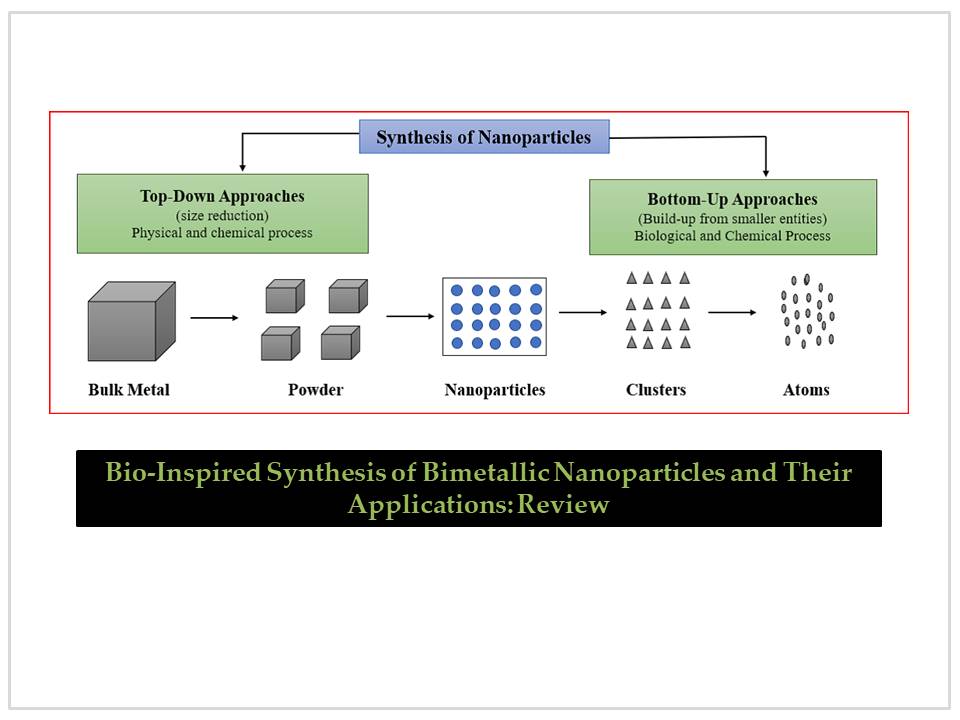Title
Bio-Inspired Synthesis of Bimetallic Nanoparticles and Their Applications: Review
Authors
Anjali Singh and Vijay Devra*
Department of Chemistry, Janki Devi Bajaj Government Girls College, Kota, Rajasthan, India
*Corresponding author E-mail address: v_devra1@rediffmail.com (Vijay Devra)
Article History
Publication details: Received: 29th November 2022; Revised: 10th February 2023; Accepted: 10th February 2023; Published: 10th March 2023
Cite this article
Anjali S.; Devra V. Bio-Inspired Synthesis of Bimetallic Nanoparticles and Their Applications: Review. Nano Prog., 2023, 5(9), 5-13.

Abstract
Bimetallic nanoparticles (BMNPs) have been the subject of extensive research, particularly in the last ten years. In this paper, we focus about the development of bimetallic nanoparticles using various plant extracts and microorganisms like bacteria, yeast, fungi, and algae, as well as their applications. Plants operate as a capping agent and a reducing agent (flavonoids, proteins, polyphenols, amino acids, alkaloids). Natural extracts provide a straightforward, economical, environmentally beneficial, and non-hazardous role in the biosynthesis of BMNPs. Transmission electron microscopy (TEM), scanning electron microscopy (SEM), Fourier transform infrared spectroscopy (FT-IR), Atomic force microscopy (AFM), Dynamic light scattering (DLS), X-ray diffraction (XRD), X-ray photoelectron spectroscopy (XPS), UV-vis spectroscopy, and zeta potential were used to characterize the synthesized nanoparticles. Due to their potential applications in a number of sectors, including biosensing, imaging, nanomedicine, and catalysis, bimetallic nanoparticles (BMNPs) have recently attracted a great deal of attention. BMNPs combine the capabilities of two metals in a nanostructured system. This research will investigate the environmental uses of green produced bimetallic nanoparticles, including dyes, metal absorption, and other organic pollutants.
Keywords
Nanotechnology; bimetallic nanoparticles; green synthesis; plant extract; microbes; applications